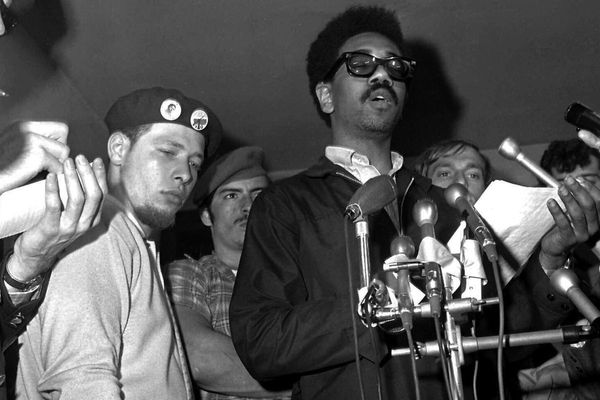Mizzou basketball coach Cuonzo Martin had a telling answer when asked recently what he thinks of this offseason’s transfer insanity.
“Today, I love it,” Martin said. “We feel like we hit the jackpot in the transfer portal. It’s been good to us.”
Translation: Martin believes he’s going to have a better team exiting the great migration than he did entering it.
Six Tigers have transferred out since the team lost to Oklahoma in the first round of the NCAA Tournament. Four newcomers have transferred in. One open scholarship remains, giving Martin some flexibility in case a desired target pops into the transfer portal later, a wise move considering the madness.
I’m old enough to remember when such an exodus suggested a program was in trouble. Those who are determined to think that is the case for Mizzou are choosing to ignore the context. Just take a look around.
The number of men’s college basketball players who have hopped into the transfer portal this offseason is up to around 1,500. More than 100 teams, such as Missouri’s, have parted ways with five or more transfers. Colorado said goodbye to six. Kansas, five. Florida is expected to start five transfers next season. What do all of those teams have in common? All three, like Missouri, played in last season’s NCAA Tournament.
This is the era college basketball has entered. A trend that has grown for years was enhanced this go-round thanks to two NCAA decisions. The first was deciding to make the 2020-21 season a free season of sorts when it came to eligibility, meaning players who would have been done with college ball can return for another non-pandemic-affected season if they like, and not count toward a team’s scholarship limits if they do. Then came the approval of the one-time transfer rule that allows players who have not transferred before to jump from one program to another and not serve the traditional penalty of sitting out a season.
That grass that has always looked greener for a player wanting more minutes, a bigger role, a new coach or just a fresh start is now easier to explore than ever before.
Changes that increase players’ flexibility and freedom will continue to add up as the NCAA attempts to modernize the amateur model that has been monetized for everyone but unpaid athletes. When million-dollar coaches can shred contracts and change teams in a flash, they can’t whine about players making moves. Well, they can. But the backlash now is instant and image-affecting. The smart ones have stopped fighting. They’ve turned their attention toward figuring out how to make the most of it.
Martin isn’t the only area coach hoping to come out ahead.
Billikens coach Travis Ford lost sixth man Demarius Jacobs to Ball State and walk-on Phillip Russell to Southeast Missouri. Both should have bigger roles at their new stops.
Ford landed a high-volume 3-point shooter in Oakland’s Rashad Williams, then successfully re-recruited Jordan Nesbitt, a local preps standout who picked Memphis over the Billikens in 2020 only to change his mind after appearing in three games for Memphis in a freshman season that won’t count toward his eligibility. And don’t forget about Francis Okoro, the Oregon transfer who had to sit out last season under the old rules. Okoro and Nesbitt were top-80 recruits exiting high school.
Illini coach Brad Underwood countered the transfer departures of starting guard Adam Miller and reserve center Jermaine Hamlin by adding Florida transfer forward Omar Payne, who started a third of the Gators’ games last season, and Utah transfer guard Alfonso Plummer, a super senior who will use his extra season to help the Illini make 3s. He ranked eighth in the Pac-12 in 3-point percentage (.383) last season while leading the conference in threes made per game (2.6). Underwood isn’t done transfer hunting, either.
Martin’s reset roster will look anything but troubling as long as the departure of up-and-down guards Xavier Pinson (Louisiana State) and Mark Smith (Kansas State) lead to better perimeter production and defense from transfer guard additions Jarron Coleman (Ball State), Amari Davis (Green Bay), and DaJuan Gordon (Kansas State). Other Tigers who transferred out — Torrence Watson, Drew Buggs, Parker Braun and Ed Chang — either already have or probably will take a step down from SEC-level competition, creating room for Martin to try to make more transfer-up magic like he did with success stories in Kassius Robertson and Dru Smith.
The latest transfer addition is Ronnie DeGray III, a versatile UMass forward who should help fill the frontcourt vacancy created by the graduation of center Jeremiah Tilmon.
Yes, nametags might be required at practice for a while. No, this was not a group that was just thrown together.
Martin entered the offseason with plans. He wanted to change the roster in order to help a floor-bound team get more athletic. He wanted to get to the rim better, and finish there more often. He wanted to have more players who can handle the ball, and more players who can guard multiple positions. He wanted to hit the court with a team that has a chance to average 80 points per game, up from the 73.4 point average last season that marked his highest yet at Mizzou. These transfers were targeted with those goals in mind.
Combo guard Coleman, a former Mid-American Conference freshman of the year, can shoot the three and has some sizzle in his game. Davis, a former Horizon League freshman of the year, has a knack for netting the pull-up runners the Tigers missed so many of last season. Gordon, once named the Chicago Sun-Times player of the year as a prospect, is not going to be the answer to the Tigers’ 3-point problems. But he is an able, willing and energetic defender who can guard multiple spots. DeGray was his team’s second-leading rebounder and leading offensive rebounder in his first season with the Minutemen.
Each transfer newcomer has at least three seasons of eligibility left. None can transfer again and play immediately elsewhere after this. They’re new now, but Martin is hoping Mizzou fans know their names soon, and for a while.
Seasons, not just a season, depend on it.







